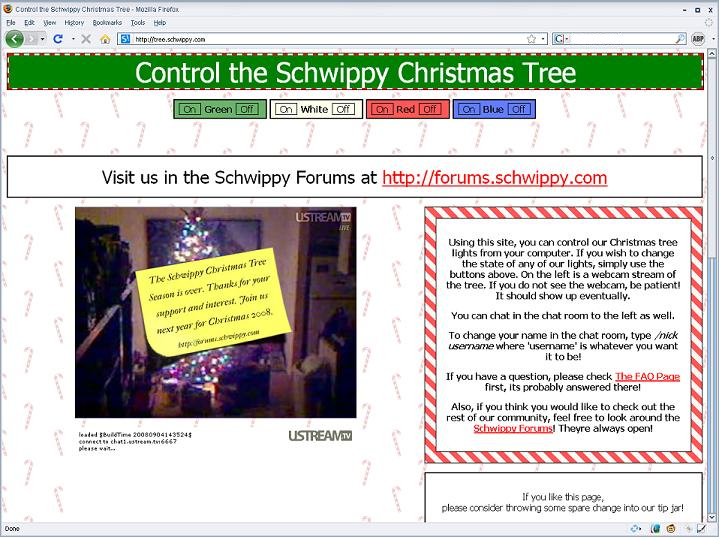Every year the Schwippy Christmass Tree is turned on and streamed to the world, allowing anyone who wants to the ability to turn the Christmas lights on or off. During the Christmas season, check it out at Tree.Schwippy.com
Attention!
As of the 2011 season, the Schwippy Christmas Tree has been completely rebuilt, and no longer uses any of the technology explained in the following write-up. A new explanation will be written as soon as possible. In the mean time, you can subscribe to updates from the previous page to be notified when the new page is online.
Details
Tree
The technology used to control the tree is actually quite lo-tech. I have been using nothing but X10technology. While a good relay/triac controller hooked up to the computer would be nice, you just cant beat the simplicity of X10.
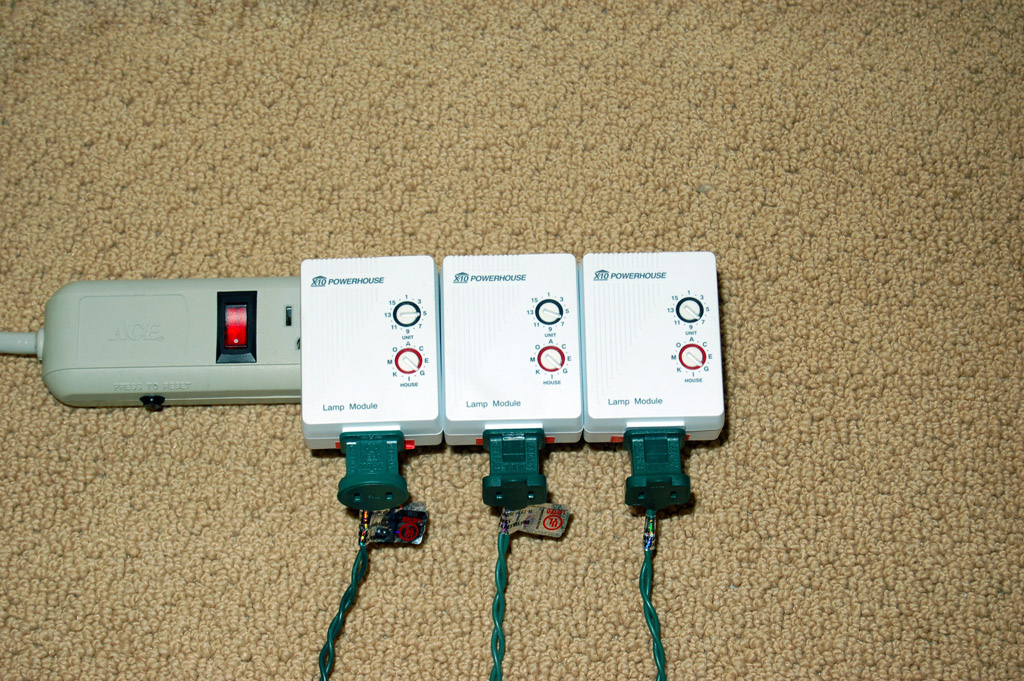
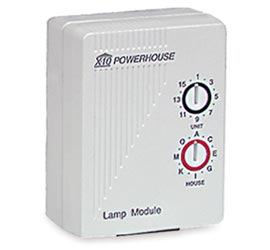 Each different strand of Christmas lights has its own X10 lamp module and address, in this case G5, G6, and G7. There are 3 strands of lights per color. The lights are wired in series – one plugged into the end of the other – so all you see here is the head strand being plugged into each X10 module. X10 lamp modules were chosen over appliance modules so the lights would fade in and out instead of instantly turn on or off. It makes for a much more plesant scene. All the X10 modules are simply plugged into a power strip behind the tree out of sight.
Each different strand of Christmas lights has its own X10 lamp module and address, in this case G5, G6, and G7. There are 3 strands of lights per color. The lights are wired in series – one plugged into the end of the other – so all you see here is the head strand being plugged into each X10 module. X10 lamp modules were chosen over appliance modules so the lights would fade in and out instead of instantly turn on or off. It makes for a much more plesant scene. All the X10 modules are simply plugged into a power strip behind the tree out of sight.
Server
The main controlling aspect of the entire system is the X10 computer interface module (Model CM11A). It is hooked up to a server running Ubuntu that is turned on all the time.
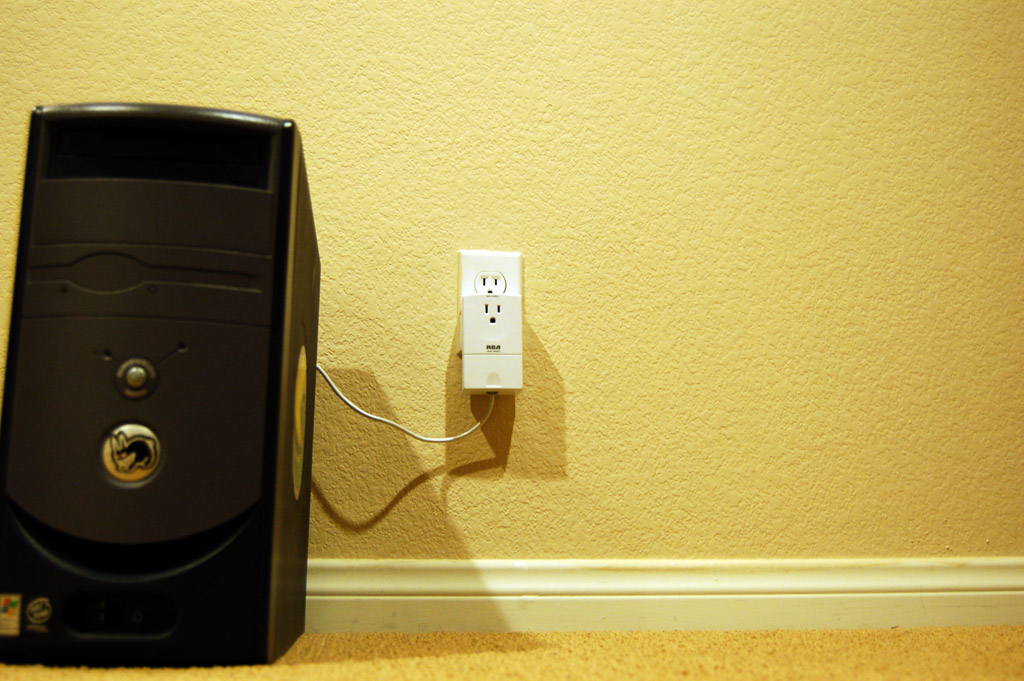
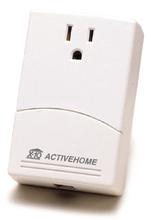
Since X10 is a power-line radio protocol, I dont have to have the equipment running in the same place, as long as they are on the same power grid (within a certain length, of course). The computer is in one room, while the tree is in a completely seperate room.
The computer sends a simple serial string to the CM11A module, which then translates the command into an X10 command and injects it onto the power grid for any receivers to capture. Unlike other X10 transmitters, the CM11A doesnt have to be locked down to one house code (The letter part of the code). Any house code and any unit code command can be sent from the computer.
